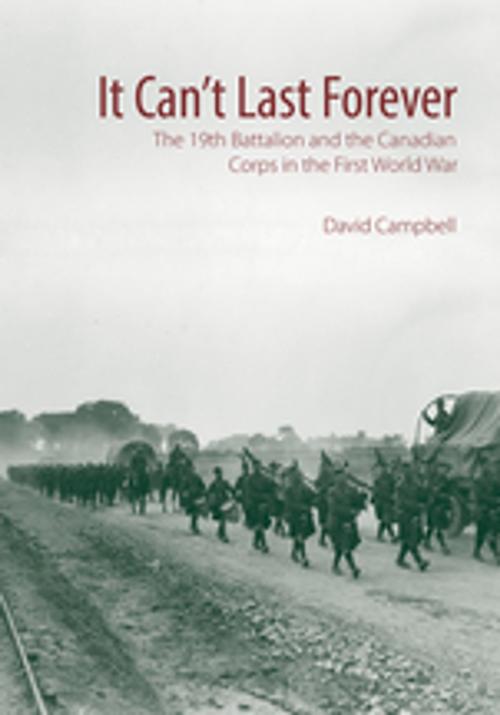It Can't Last Forever
The 19th Battalion and the Canadian Corps in the First World War
Nonfiction, History, Canada, Military, World War I| Author: | David Campbell | ISBN: | 9781771122542 |
| Publisher: | Wilfrid Laurier University Press | Publication: | October 12, 2017 |
| Imprint: | Wilfrid Laurier University Press | Language: | English |
| Author: | David Campbell |
| ISBN: | 9781771122542 |
| Publisher: | Wilfrid Laurier University Press |
| Publication: | October 12, 2017 |
| Imprint: | Wilfrid Laurier University Press |
| Language: | English |
The 19th Battalion was an infantry unit that fought in many of the deadliest battles of the First World War. Hailing from Hamilton, Toronto, and other communities in southern Ontario and beyond, its members were ordinary men facing extraordinary challenges at the Somme, Vimy Ridge, Passchendaele, Amiens, and other battlefields on Europe’s Western Front.
Through his examination of official records and personal accounts, the author presents vivid descriptions and assessments of the rigours of training, the strains of trench warfare, the horrors of battle, and the camaraderie of life behind the front lines. From mobilization in 1914 to the return home in 1919, Campbell reveals the unique experiences of the battalion’s officers and men and situates their service within the broader context of the battalion’s parent formations—the 4th Infantry Brigade and the 2nd Division of the Canadian Corps. Readers will gain a fuller appreciation of the internal dynamics of an infantry battalion and how it functioned within the larger picture of Canadian operations.
The 19th Battalion was an infantry unit that fought in many of the deadliest battles of the First World War. Hailing from Hamilton, Toronto, and other communities in southern Ontario and beyond, its members were ordinary men facing extraordinary challenges at the Somme, Vimy Ridge, Passchendaele, Amiens, and other battlefields on Europe’s Western Front.
Through his examination of official records and personal accounts, the author presents vivid descriptions and assessments of the rigours of training, the strains of trench warfare, the horrors of battle, and the camaraderie of life behind the front lines. From mobilization in 1914 to the return home in 1919, Campbell reveals the unique experiences of the battalion’s officers and men and situates their service within the broader context of the battalion’s parent formations—the 4th Infantry Brigade and the 2nd Division of the Canadian Corps. Readers will gain a fuller appreciation of the internal dynamics of an infantry battalion and how it functioned within the larger picture of Canadian operations.















